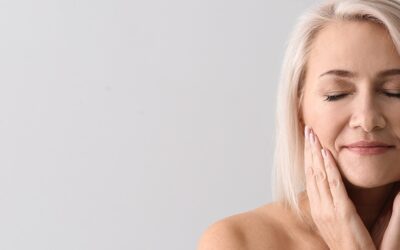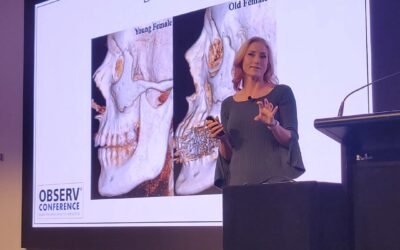New Zealand sun is the leading cause of premature ageing; dry, crepey, pigmented and wrinkled skin. It’s also to blame for New Zealand’s most common cancer – skin cancer. Skin Team Leader Lauren breaks down the truth about sunscreen: ingredients (what to look for), what SPF actually means, what the number represents and exactly what sunscreen is best for you.
As we approach better weather with the opportunity to spend more time outside, it’s a good time to remember the rigours of the sun on our skin. We are always susceptible to sun damage, all year round, but most of us just spend more time outside in the summer. The main difference is that UVB is more predominant in summer, but the deeper damaging rays of UVA are always constant.
Sunscreen ingredients: chemical vs mineral
There are many active ingredients used in sunscreens, both chemical and mineral. Chemical sunscreens absorb UV and mineral sunscreens reflect UV. Different ingredients will absorb or reflect UV at different wavelengths making it necessary to use a combination of ingredients to protect you from as many UV rays as possible.
There is a complex process to how sunscreens work, but a couple of things to look out for when choosing a product are:
- That it contains zinc (as it is the most broad-spectrum ingredient)
- If it does contain chemical ingredients, these are best accompanied with antioxidants – often a blend of various ingredients is best: zinc and or titanium dioxide (mineral), antioxidants along with a chemical element
- If you are going to be in more extremes – swimming, exercising or at the beach – reach for a sunscreen with a combination of chemical, mineral and antioxidant sunscreen
- Remember, sunscreens are exactly that: they ‘screen’, not block. There is no substitute for covering up and there should still be a limit to how much time we spend in the sun.
A chemical sunscreen will produce its own free radical as a chemical by-product when it absorbs UV: a ‘good’ chemical sunscreen will contain an antioxidant to help neutralise this process. Minerals don’t create a free radical but do not stay on the skin as effectively and can sweat and wipe off more easily. Hence, I have suggested looking first at your lifestyle, before investing in a sunscreen.
For general daily use without experiencing significant sun exposure, a mineral sunscreen is best. You need to reapply sunscreen every 2 hours. A simple way of ensuring you have good UV protection is by using 100% mineral makeup. It’s easy to reapply during the day when you refresh your makeup rather than having to constantly apply liquid sunscreens. Remember that many office lights contain UVA, so you should be using sunscreen all day, every day, whether you are inside, outside or at the office!
Is a higher SPF always better?
People are often confused by SPF and what it actually represents, giving a misleading interpretation of how protected you actually are. There is little difference between an SPF15 and those sunscreens stating higher SPFs. SPF suggests the amount of time you can stay in the sun based on your own burn time, i.e. 15 x longer than your natural burn time. An SPF15 blocks 94% of the sun’s rays while an SPF30 blocks 97%. A high SPF can give a false sense of security, meaning you do not reapply it regularly enough. Most sunscreens still need to be applied every two hours to give you the promised protection. Remember sunscreen is exactly that – a screen, not a block, so time in the sun should still be limited.
The importance of antioxidants for protecting skin – another option
Most people don’t realise that antioxidants are an important and integral part of sun protection. The skin naturally produces antioxidants, including vitamin C, which helps neutralise the damaging free radicals caused by UV. In areas that are exposed for long periods, the skin basically becomes in deficit and damage will occur. Vitamin C will also help protect against deeper rays hat sunscreens can’t. It is imperative to apply antioxidants daily to exposed areas such as the face, décolletage and backs of hands to maintain a healthy skin. Additionally, Dr Des Fernandes, the founder of Environ, recommends starting topical antioxidant serums as early as possible, even in early childhood, which may also reduce the chance of developing cystic acne as a teenager (see Environ Antioxidant Gel at the bottom of the blog).
“Healthy skin is a reflection of overall wellness. Invest in your skin – it’s going to represent you for a very long time.”
What sunscreen is best for me?
Colorscience Sunforgettable – One of my favourites is this powder/ brush sunscreen. This is such a user-friendly product with the highest mineral content of all our sunscreens but without the white looking residue often caused by high zinc/titanium products. It comes with a tint: fair, medium, and tan and comes in a cartridge with attached brush and is easily applied either over makeup or as a stand-alone sunscreen. Can be bushed over the ears and into the hairline without worrying about oily residue.
Purchase Colorscience Sunforgettable
PCA Sheer Tint Broad Spectrum SPF45 – A face sunscreen you’ll actually want to wear! If you are a regular skin client – this is the product we put on after your skin treatments. This light, silky broad-spectrum sunscreen is formulated with a universal tint, to match most skin tones. Added antioxidant protection and water resistance makes this the perfect sunscreen for a glow. Use it alone or wear it under makeup for a flawless finish.
Purchase PCA Sheer Tint Broad Spectrum
Environ Comfort+ Antioxidant Gel – For additional protection (not replacement) this product is rich in antioxidants and can be applied both before and after sun exposure. It’s also very soothing if you accidentally get burned. The antioxidants may reduce long-term damage.
Purchase Comfort+ Environ Antioxidant Gel
The Heliocare 360º range – We have recently introduced this new range, which meets the highest photoprotection standards. With specific filters plus repairing and antioxidant active ingredients, every product in the range protects against the 4 types of radiation (UVB, UVA, Visible and Infrared), while it neutralises and repairs sun damage.
Fernblock is the base active ingredient. This is an exclusive extract of Polypodium Leucotomos with powerful protective, antioxidant and restorative action that works both topically and orally.
We are offering four different types of facial sunscreens in this range, as well as a tinted option that comes in three shades. There is one to suit every skin type!
One product you may not be familiar with is oral sunscreen – the Heliocare 360º Capsules. These are not be used instead of topical sunscreen, but as an additional layer of protection. We can all feel guilty about the skin damage sustained while we enjoy lazy days at the beach – even when we’re covered head to toe in sunscreen! These capsules give extra assurance because the intense antioxidant benefits are mitigating the negative effects of sun exposure.
Purchase Heliocare 360º Sunscreens And Capsules
Stay safe and protect your skin!
Warmest regards,
Lauren – Your Skin Team Leader





